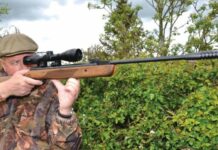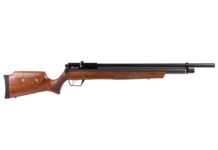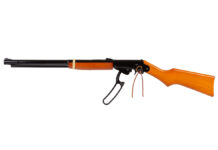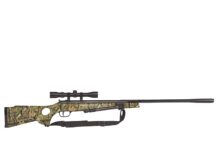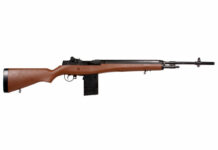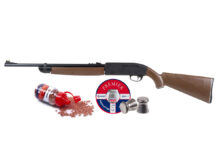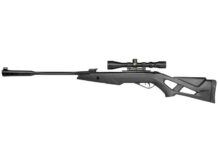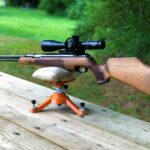At AntlerBuyers.Com, we strongly believe that antler shed hunters deserve to be well-informed with up-to-date antler prices. That is why we built a tool to deliver the most accurate and current pricing of Elk, Whitetail, Mule, and Moose antlers.
Our data compilation process involves a collection of insights from various stakeholders in the antler industry, including antler buyers, shed hunters, and brokers. To ensure the latest pricing data, our system undergoes frequent updates. The last update was on Nov 8th, 2024.
Don’t agree with the antler prices below? Suggest your antler prices here.
Below are the current (2024) antler prices:
Table of Contents
Elk
Whitetail Deer
Mule Deer
Moose
Advertisement
The provided prices can assist you in accurately determining the current value of your antlers.
* The price is an estimate. Click here to see how our antler price data collection works.
What Are Antler Sheds?
Learn More: What Are Antler Sheds?
Antler sheds, often simply referred to as “sheds,” are the discarded antlers of certain animals, primarily those in the deer family, such as deer, moose, elk, caribou, and reindeer. Antlers are the impressive bony structures that grow on the heads of these animals, primarily males. What makes antler sheds intriguing is that they are the natural result of an annual cycle of growth, use, and renewal.
Here’s a breakdown of what antler sheds are and how they come to be:
1. Antler Growth: Antlers start growing in the spring and continue to develop throughout the summer. They are initially covered in a soft layer of skin and fur known as “velvet.” During this growth phase, antlers are rich in blood vessels and sensitive nerve endings, allowing for rapid expansion.
2. Use in Breeding Season: Antlers serve several purposes, including attracting mates and competing with other males during the rut, or breeding season. Male animals use their antlers in combat for dominance and the right to mate with females.
3. Shedding: After the rut, usually in late winter or early spring, antlers begin to weaken at their base. This weakening is a result of hormonal changes and decreasing daylight hours. Eventually, the connection between the antlers and the animal’s skull weakens to the point where the antlers drop off. This natural process is called “shedding.”
Learn More: Does Antler Shedding Hurt?
4. Regrowth: Once the antlers are shed, the animal enters a phase of antler regrowth. New antlers begin to grow, and the cycle repeats itself in preparation for the next breeding season.
5. Antler Sheds: The antler sheds, which are the discarded antlers, can be found in various natural settings, such as forests, fields, and even in backyards. Shed hunters often search for these antler sheds, as they are highly sought after for their aesthetic value and use in various crafts.
What Are Antler Sheds Used For?
Antler sheds serve several important purposes in the natural world. First and foremost, they are a valuable source of minerals for many animals. Small mammals, such as rodents, will often gnaw on antlers to obtain essential nutrients like calcium and phosphorus. Additionally, herbivores like elk and deer themselves may consume antlers during periods of nutrient scarcity, helping them replenish vital minerals after the demanding rutting season.
In the realm of human activities, antler sheds are sought after for various purposes. Many people collect them for their unique beauty and use them in crafts, decor, and jewelry-making. Due to their durability and intricate designs, antler sheds are also used to create knife handles, buttons, and furniture components.
Below are just a few uses of antler sheds:
- Crafts and Decor: Antler sheds are prized for their unique appearance and are often used in crafting. They can be carved, polished, and shaped into various artistic and decorative items. These include chandeliers, lampshades, candleholders, and wall art. Their natural beauty adds a rustic and elegant touch to interior design.
- Jewelry: Antler sheds are utilized to create exquisite jewelry pieces. Jewelers carve and shape antlers into pendants, earrings, rings, and bracelets. The organic and earthy aesthetic of antler jewelry appeals to those who appreciate nature-inspired accessories.
- Knife Handles: Due to their durability and comfortable grip, antler sheds are commonly employed in the production of knife handles. Hunters and outdoor enthusiasts often prefer knives with antler handles for their aesthetic appeal and practicality.
- Furniture: Antler sheds find their way into furniture design, particularly in rustic and lodge-style pieces. They are used as chair and table legs, drawer pulls, and cabinet handles. Their incorporation adds a touch of the outdoors to interior furnishings.
- Dog Chews: Antler sheds are also used to create natural and durable dog chews. They are a safer alternative to synthetic toys and can provide hours of entertainment for dogs while helping to maintain their dental health.
- Cultural and Ritual Objects: In some cultures, antlers have symbolic significance and are used in traditional ceremonies and rituals. They may be incorporated into religious artifacts or cultural regalia, carrying deep cultural meaning.
- Educational and Scientific Purposes: Antler sheds are valuable for educational and scientific purposes. They can be used in classrooms and wildlife education programs to teach about animal anatomy and behavior. Researchers and biologists may study antler sheds to learn more about the health and habits of wildlife populations.
- Sculptures and Art: Artists often use antler sheds as a medium for creating sculptures and artwork. The natural curves and textures of antlers can inspire intricate and captivating art pieces.
- Collectibles: Antler sheds are highly collectible items for those interested in nature and wildlife. Collectors seek sheds with unique characteristics, such as size, shape, or coloration, adding to their personal collections.
Who Buys Antlers Sheds?
Antlers are bought by a variety of individuals and businesses involved in different industries. In the United States and Canada, the primary buyers of antlers are often referred to as “antler buyers.” These individuals specialize in purchasing antler sheds from various sources, including collectors, hunters, and farmers. Antler buyers pay for antlers based on their weight, and they deal with antlers from elk, deer, and moose. Antler buyers journey across the United States and Canada to purchase various types of antlers from sellers.
The uses of antlers by antler buyers typically fall into several categories:
- Collectors and Enthusiasts: Some people buy antlers as collectibles or for personal enjoyment. They may appreciate the natural beauty of antlers or use them for decorative purposes in their homes or cabins.
- Craftspeople and Artists: Many artisans and craftsmen buy antlers to create unique and handcrafted items such as chandeliers, knife handles, jewelry, and sculptures. Antlers are highly prized for their aesthetic appeal and versatility in artistic endeavors.
- Furniture Manufacturers: Antlers are a sought-after material in the furniture industry, especially for crafting rustic or Western-style furniture. They are often used for chair legs, table bases, and other decorative elements.
- Decor and Home Improvement Businesses: Businesses specializing in home décor and interior design may purchase antlers to incorporate into their products or design projects. Antlers can add a distinctive and natural touch to home interiors.
- Chinese Medicine and Cosmetic Companies: Antlers are an essential ingredient in traditional Chinese medicine and cosmetics. Chinese medicine practitioners and cosmetic manufacturers often buy antlers for their purported health and beauty benefits.
- Export to Asia: A significant portion of antlers purchased by antler buyers is exported to countries like Korea and China. These markets have a high demand for antlers, primarily for medicinal and cosmetic purposes.
- Wholesale and Retail Markets: Some antler buyers act as intermediaries, purchasing antlers from collectors and hunters and then selling them to various businesses in the wholesale or retail market, meeting the diverse needs of their customers.
If you’re considering selling your antlers, take a moment to check our carefully curated list of verified antler buyers. Additionally, don’t forget to consult our ‘Current Antler Price Chart’ for up-to-date pricing information on elk, whitetail, and mule deer antler sheds.
Learn More:
- Dispelling Myths & Misconceptions About Antler Shedding
- What’s The Difference Between Antlers & Horns?
If you have any suggestions or questions, feel free to contact us here.
Want to meet the author? Check out AntlerBuyers.Com about us page here.




